Bát Tràng has been producing ceramics for over 700 years, but it’s the recent decades that interest me most: a period in which this small village has mirrored Vietnam’s rapid economic growth.
Once focused on supplying the domestic and regional market, Bát Tràng is now a global producer in ceramics, exporting goods around the world while also drawing over 100,000 tourists annually who come to visit its museums, browse the markets, and try their hand at pottery.
What strikes me most about Bát Tràng is the coexistence of scales: sprawling factories operate alongside more than 1,000 family-run workshops. When you walk its narrow streets, it feels like every household is involved in ceramics in some way, mixing clay, firing kilns, loading motorbikes. Production spills into alleys and courtyards, into kitchens and storefronts.
This photo album traces that ecosystem — from raw materials to finished wares — documenting a working village that sits at the intersection of tradition, industry, and transformation.
Bát Tràng is a microcosm of Vietnam’s economic story: rapid growth alongside deep tradition. Here, something beautiful, sacred, or functional emerges from nothing more than a lump of earth — a quiet, constant act of transformation.
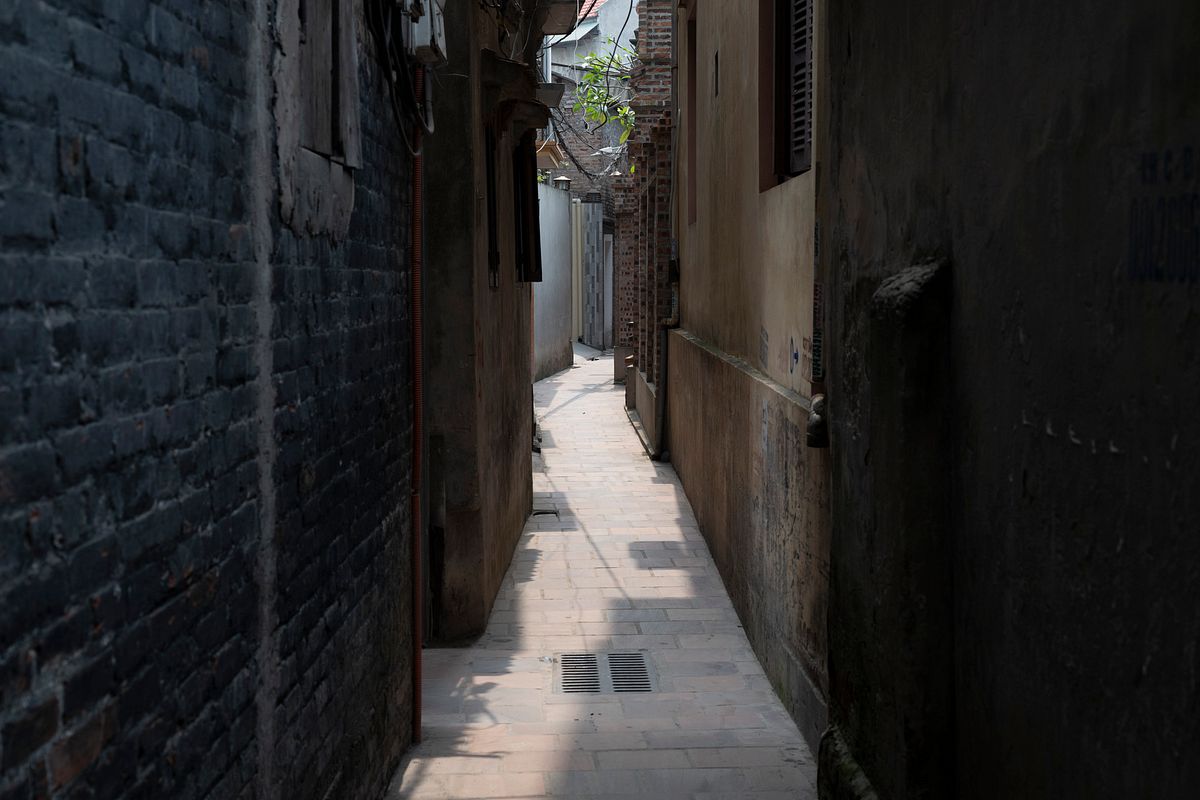
The maze-like alleys of Bát Tràng, where tradition, craftsmanship and mass production take place in almost every home.
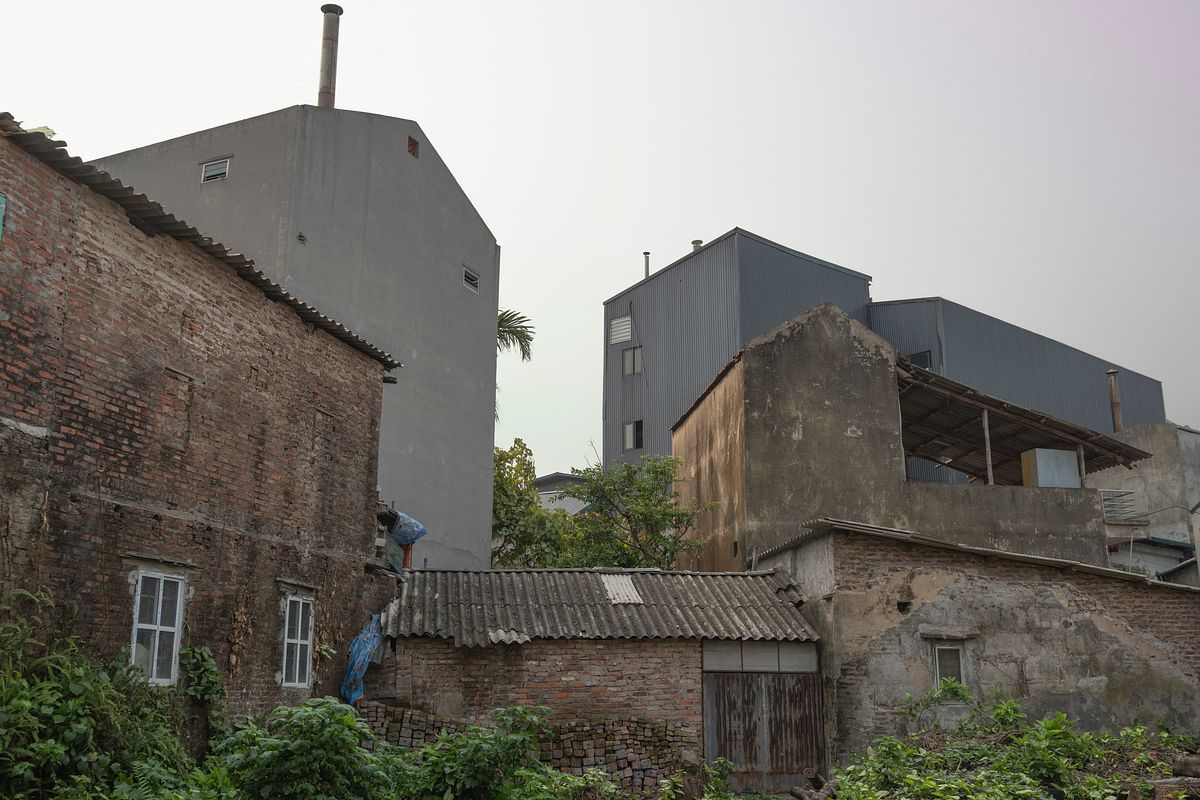
Red brick weathered factories overshadowed by towering modern factories amid Bát Tràng’s evolving skyline.
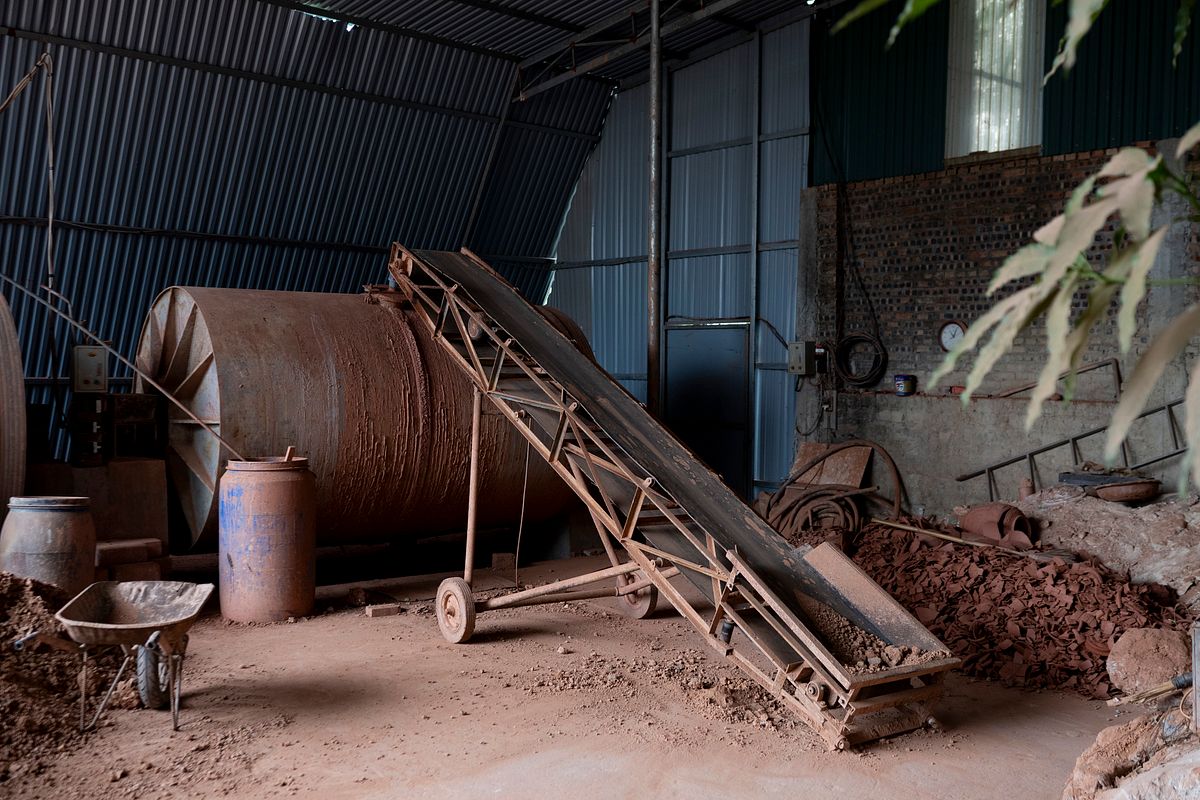
A massive mixing drum processes the raw clay, the starting point of ceramic creation.
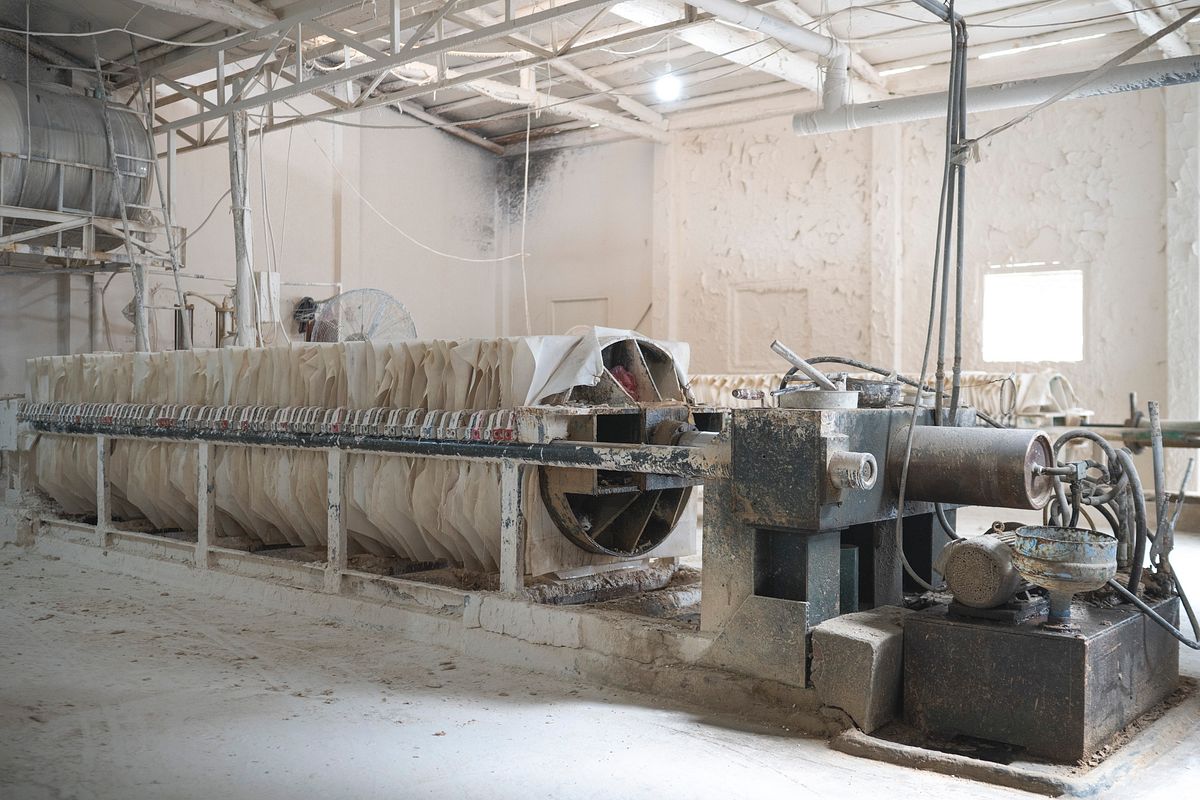
A vast pressing machine, a next step in the industrial scale metamorphosis of raw clay into mass-produced ceramics or hand-crafted beautiful objects; everything stems from the same earth.
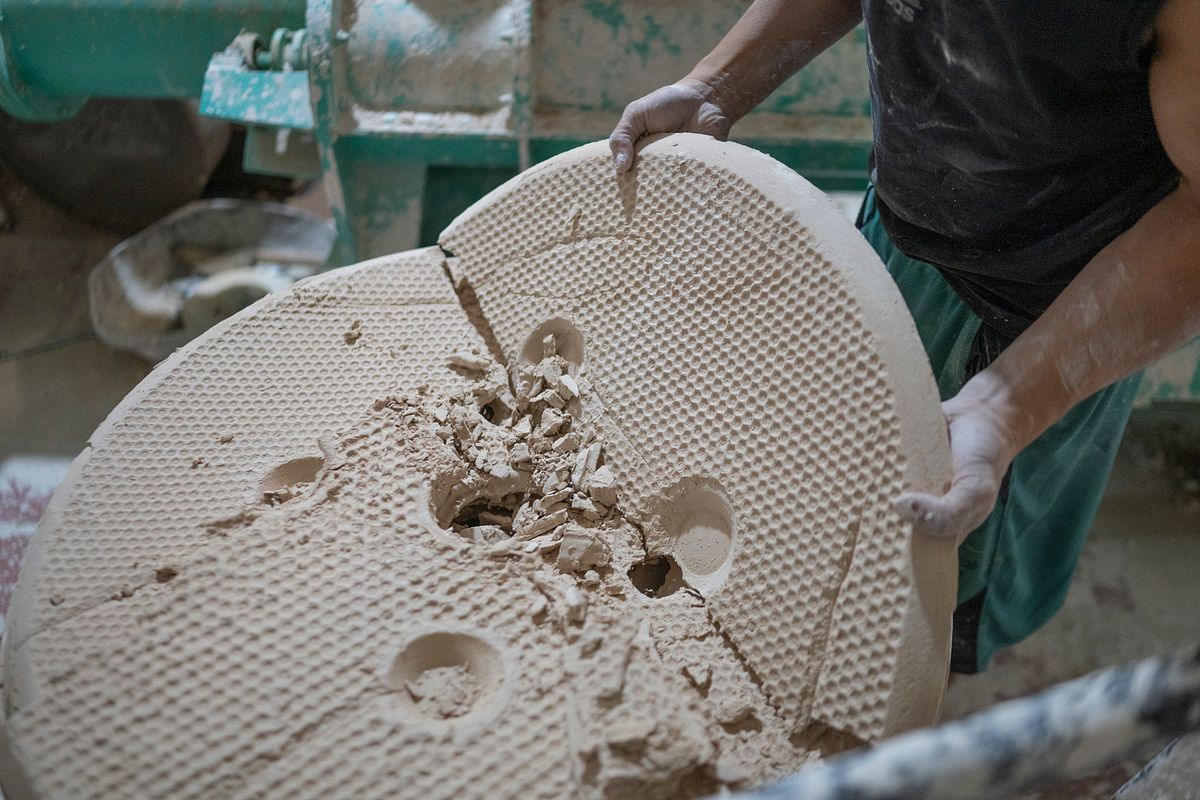
A freshly pressed clay disc is removed from the machine to continue in the next step in the process.
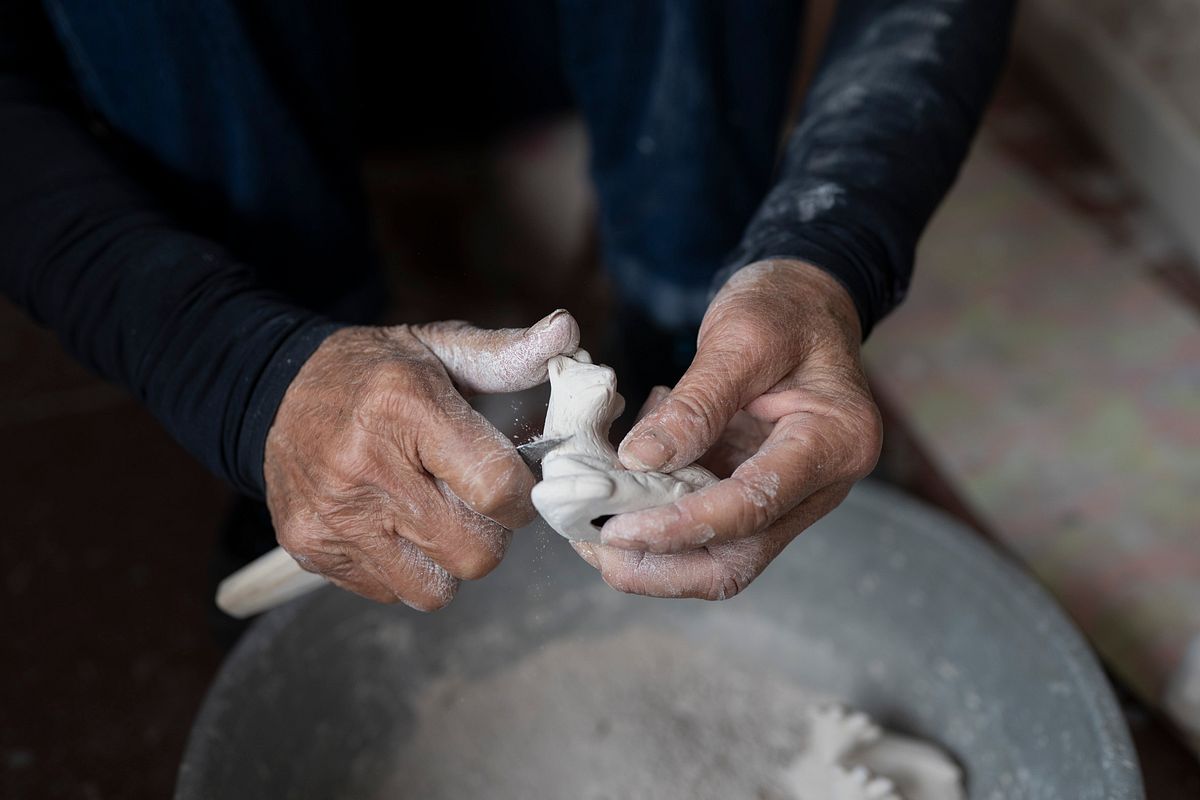
Experienced hands shape a small figurine.
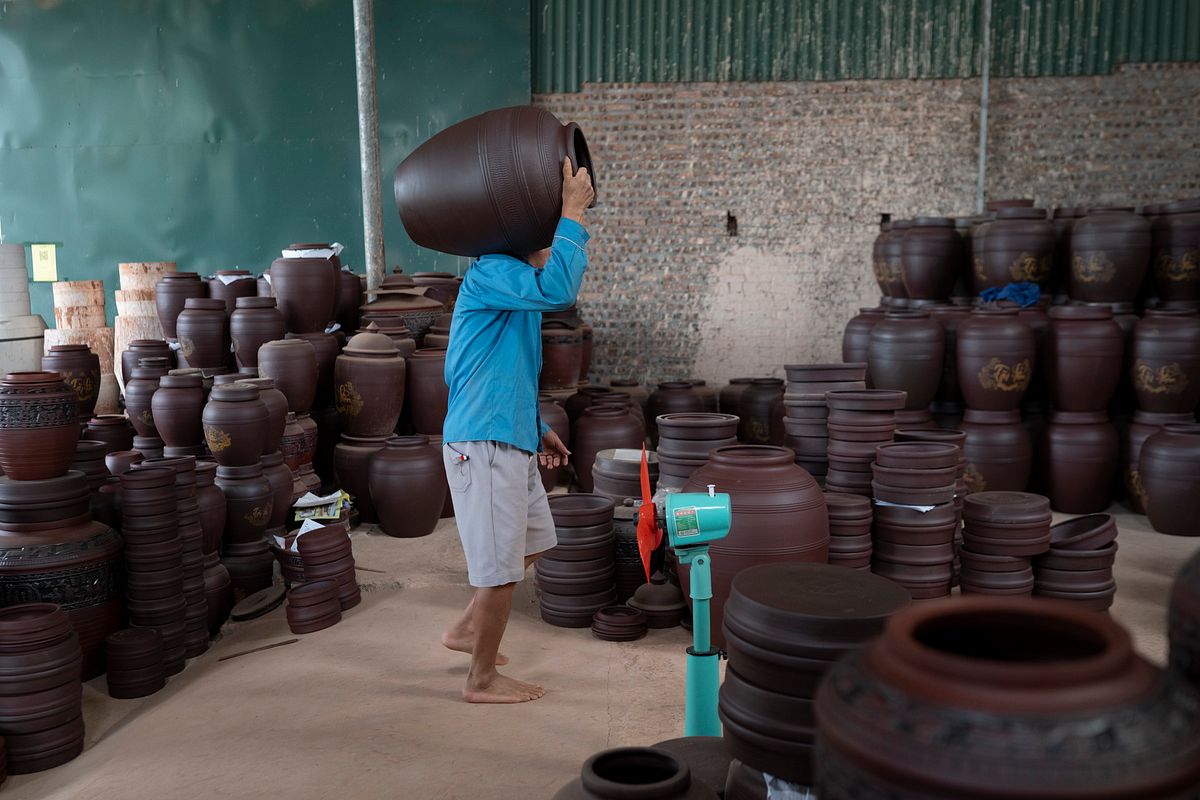
A worker carries a large pot from the kiln into storage.
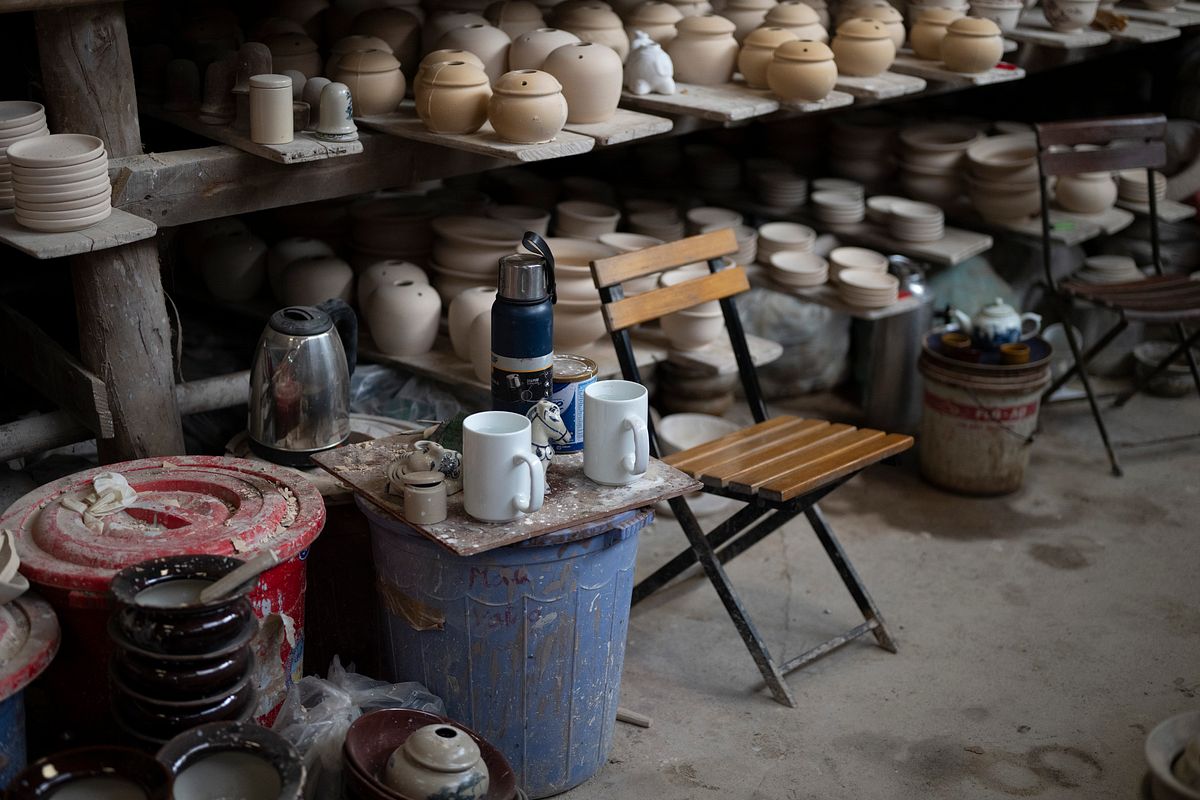
An empty break area within a factory, where workers find moments of rest among the ceramics and grab a cup of tea or coffee.
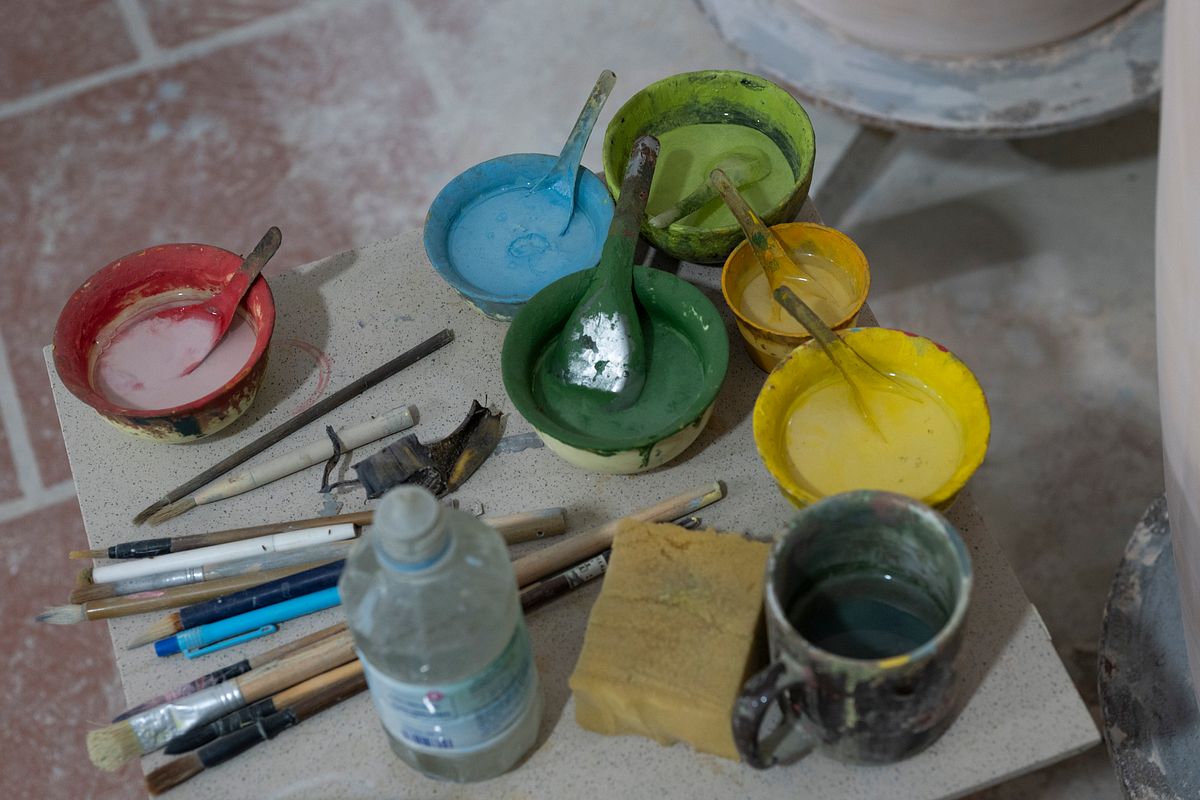
Pots of vivid glazes, ready to be applied, revealing the artistic side of Bát Tràng’s production.
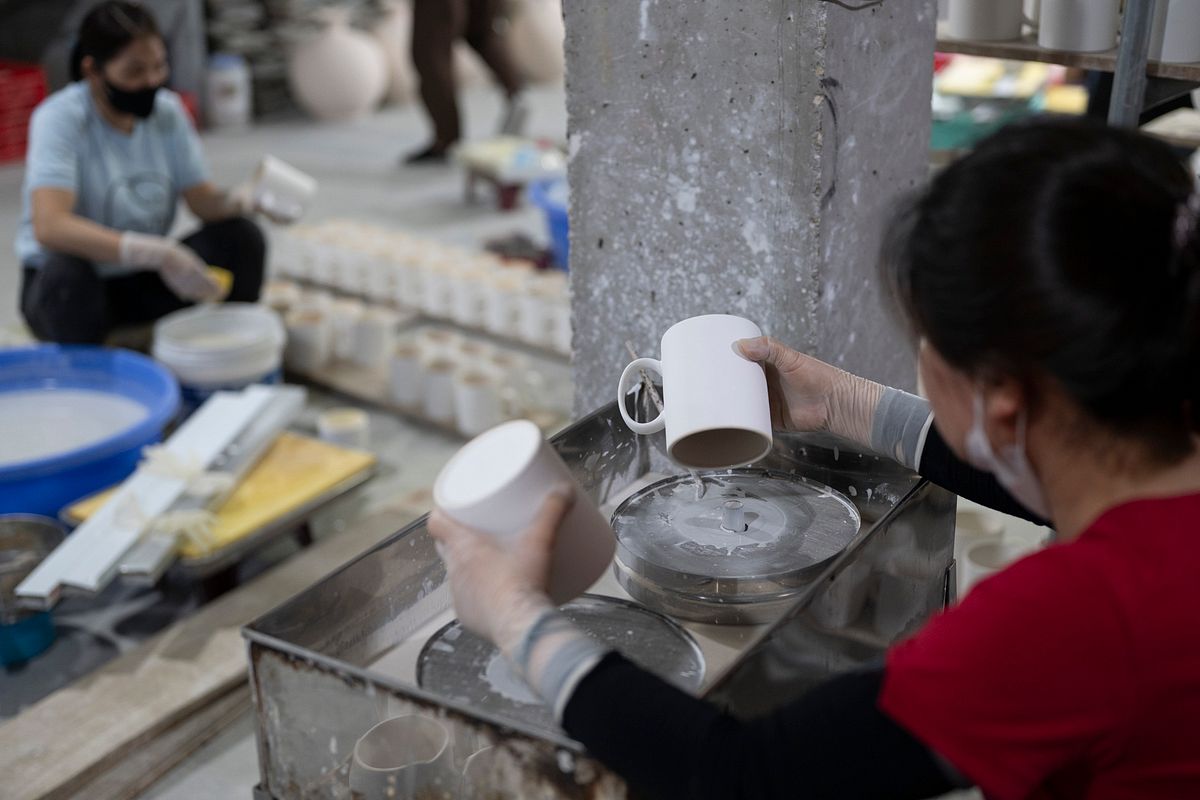
A worker applies glaze to mugs using a machine, a glimpse of the mass production process.

Rows of clay products and machinery in one of Bát Tràng’s larger industrial spaces.

An artisan carefully works on a traditional pot, one of the last studios preserving designs of this type.
















